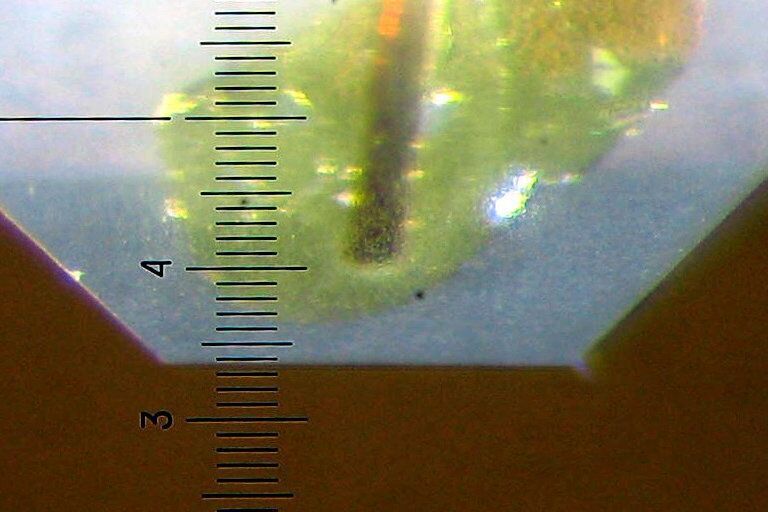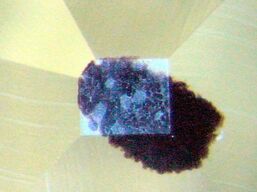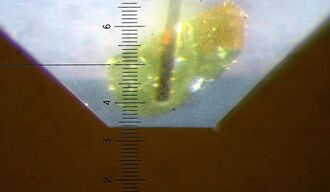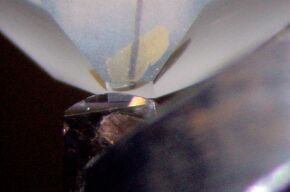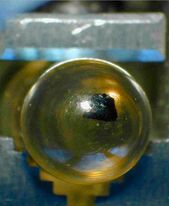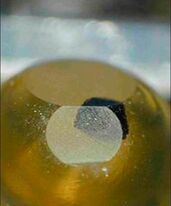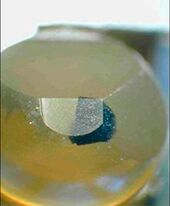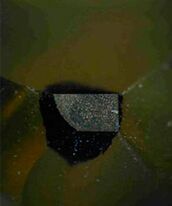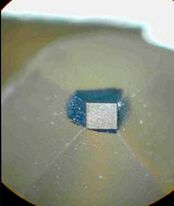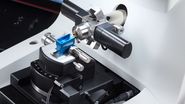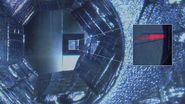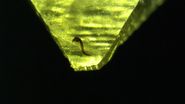Specimen trimming is needed prior to ultramicrotomy
For instance, to achieve the optimum sectioning results of biological embedded samples, the surrounding embedding material has to be entirely removed. Thus, only the sample is present in the block-face and a "homogeneous" material can be sectioned. Especially when sectioning with a glass knife, the embedding material would influence the section results due to the different compression behaviour. Additionally a further effect on the sectioning results is seen in the edges of the block-face. Only two exact parallel trimmed edges produce a straight ribbon of sections. Furthermore, the sharpness of the trimmed edge has a direct relationship to the section thickness which can be achieved. Finally, a rule of thumb should be mentioned: "The smaller the block-face is trimmed, the easier the sectioning performance will be."
Conventional trimming of embedded samples involves the use of razor blades and a great deal of skill by the ultramicrotomist. The shape of the block face and the straightness of the edges of the trimmed sample has a profound effect on the sectioning characteristics. Parallel edges top and bottom are a must. To achieve this quickly and safely is challenging and potentially hazardous with a razor blade especially on industrial materials. Important specimens can be destroyed by a minor inaccuracy in trimming.
Video: Trimming of metals
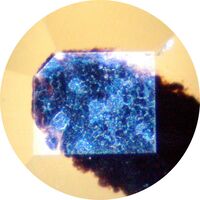
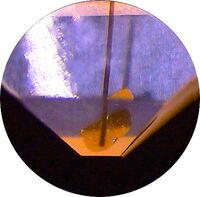

Applications
Download
Download PDF "EM Sample Preparation – Specimen Trimming"
